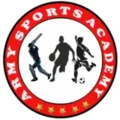

Athletics, the foundation of many sports, is a discipline that demands dedication, precision, and a holistic approach to training. In a sports academy setting, athletics coaching plays a pivotal role in identifying, nurturing, and developing young talent into world-class athletes. This comprehensive guide delves into the key aspects of athletics coaching, from talent identification to performance optimization, with a focus on the unique environment of a sports academy.
Talent Identification and Development
- Comprehensive Screening:
- Physical attributes: Coaches assess factors like speed, power, agility, flexibility, and endurance.
- Technical proficiency: Basic running, jumping, and throwing techniques are evaluated.
- Psychological traits: Mental toughness, motivation, and the ability to handle pressure are considered.
- Early Specialization:
- Gradual introduction: Young athletes are exposed to a variety of events to identify natural strengths and preferences.
- Focused training: Once specialization occurs, training programs are tailored to the athlete’s chosen event.
- Long-Term Athlete Development (LTAD):
- Age-appropriate training: Programs are designed to match the athlete’s developmental stage, preventing burnout and injury.
- Progressive overload: Training intensity and volume are gradually increased to optimize adaptation.
Technical Coaching
- Fundamental Skills:
- Proper running technique: Focus on posture, arm action, foot strike, and stride length.
- Effective jumping techniques: Teach takeoff, flight phase, and landing mechanics for high jump, long jump, and triple jump.
- Accurate throwing techniques: Instruct athletes in the proper grip, release, and follow-through for javelin, shot put, discus, and hammer throw.
- Event-Specific Coaching:
- Sprint coaching: Develop explosive power, acceleration, and top-end speed.
- Middle-distance and distance coaching: Emphasize aerobic endurance, lactate threshold training, and pacing strategies.
- Hurdle coaching: Teach hurdle technique, rhythm, and coordination.
- Field event coaching: Focus on technical refinement, strength training, and mental preparation.
Strength and Conditioning
- Periodized Training:
- Macrocycles: Long-term planning that includes preparation, competition, and recovery phases.
- Mesocycles: Intermediate-term planning that focuses on specific training goals.
- Microcycles: Short-term planning that outlines daily or weekly training sessions.
- Strength Training:
- Plyometrics: Develop explosive power through exercises like box jumps, depth jumps, and medicine ball throws.
- Resistance training: Build strength and muscle mass with weightlifting and resistance band exercises.
- Flexibility and Mobility:
- Stretching: Improve range of motion and reduce injury risk.
- Yoga and Pilates: Enhance flexibility, core strength, and body awareness.
Psychological Training
- Mental Toughness:
- Develop resilience, focus, and the ability to handle adversity.
- Teach visualization, goal setting, and positive self-talk techniques.
- Performance Anxiety:
- Implement relaxation techniques like deep breathing and meditation.
- Provide strategies for managing pre-competition nerves.
- Motivation and Goal Setting:
- Set realistic and achievable goals.
- Provide positive reinforcement and feedback.
Nutrition and Recovery
- Optimal Nutrition:
- Balanced diet: Ensure adequate intake of carbohydrates, proteins, fats, vitamins, and minerals.
- Hydration: Maintain proper fluid balance to optimize performance.
- Timing of meals: Strategically plan meals and snacks to fuel training and recovery.
- Effective Recovery:
- Adequate sleep: Prioritize sufficient rest to promote muscle repair and cognitive function.
- Active recovery: Engage in low-intensity activities like swimming or cycling.
- Massage and therapy: Reduce muscle soreness and improve blood flow.
Injury Prevention and Rehabilitation
- Comprehensive Warm-up:
- Dynamic stretching: Prepare the body for physical activity by gradually increasing heart rate and blood flow.
- Specific drills: Target the muscles and movements used in the athlete’s chosen event.
- Proper Technique:
- Minimize injury risk by teaching and reinforcing correct technique.
- Provide immediate feedback and corrections.
- Strength and Conditioning:
- Develop balanced strength to reduce the likelihood of overuse injuries.
- Incorporate injury prevention exercises into training programs.
- Rehabilitation:
- Collaborate with medical professionals to create individualized rehabilitation plans.
- Focus on regaining strength, flexibility, and functional movement.
Coaching Philosophy and Ethics
- Athlete-Centered Approach:
- Prioritize the athlete’s well-being and long-term development.
- Foster open communication and trust.
- Create a positive and supportive training environment.
- Ethical Conduct:
- Adhere to the principles of fair play and sportsmanship.
- Maintain confidentiality and respect for athletes.
- Avoid the use of performance-enhancing drugs and substances.
